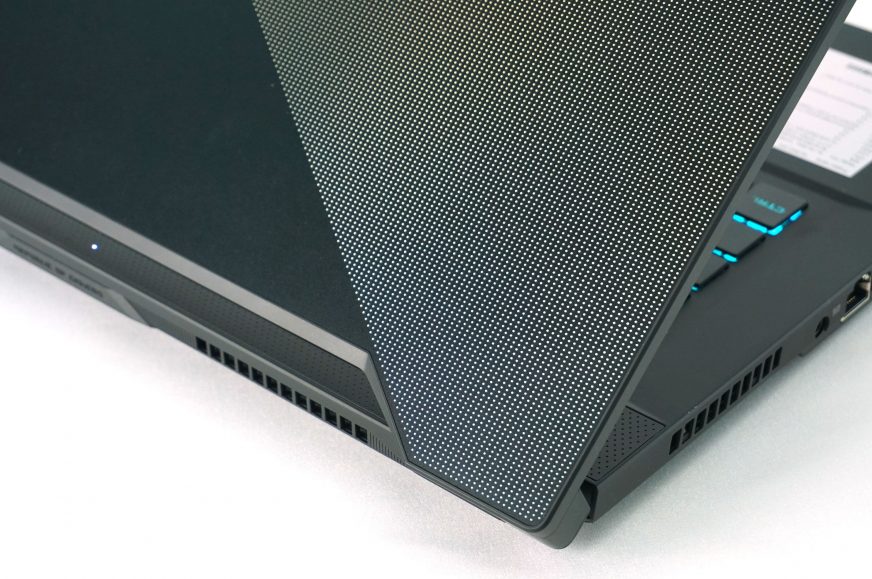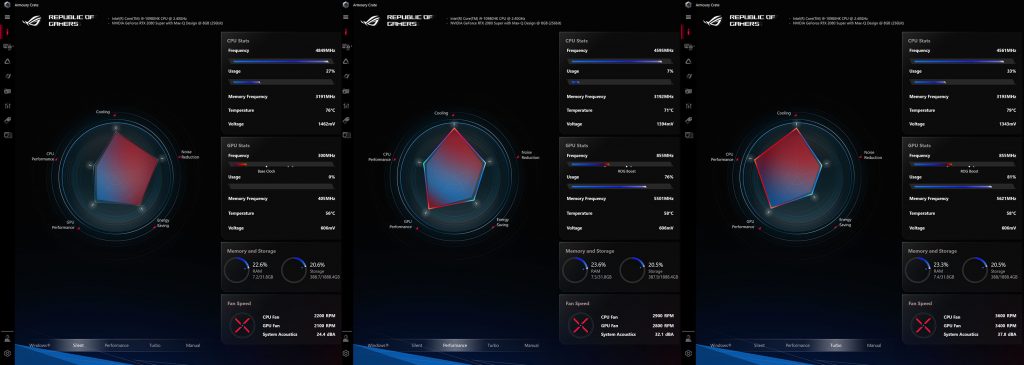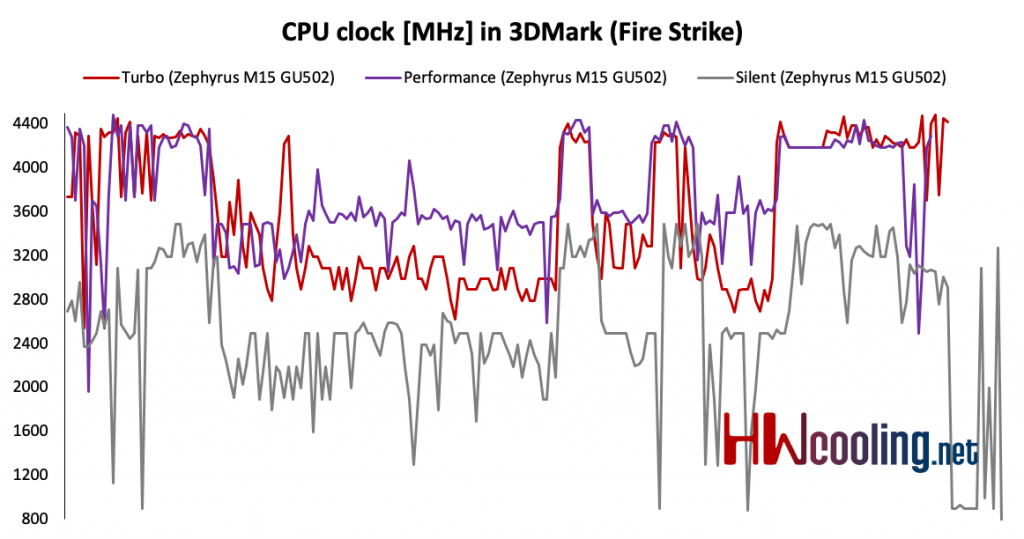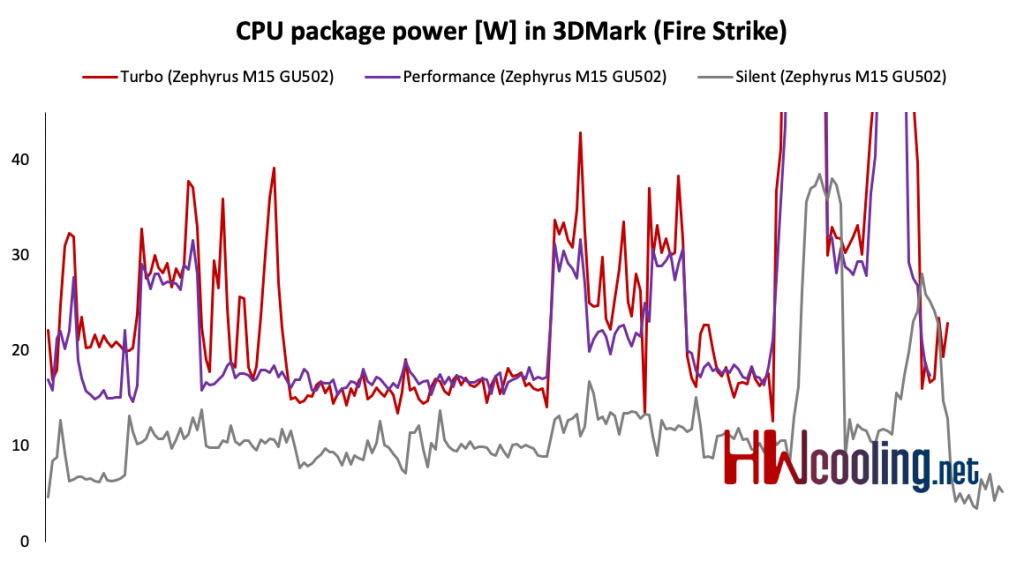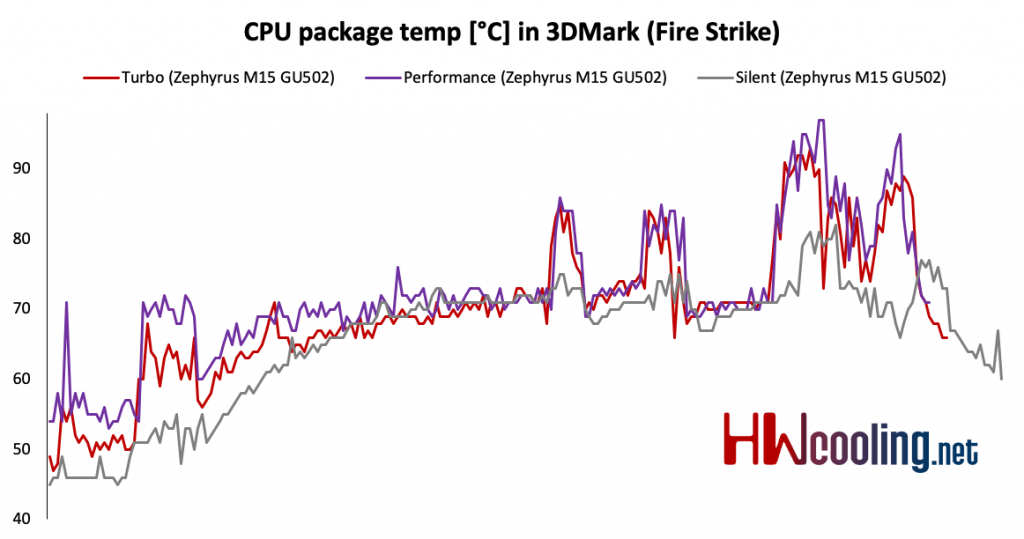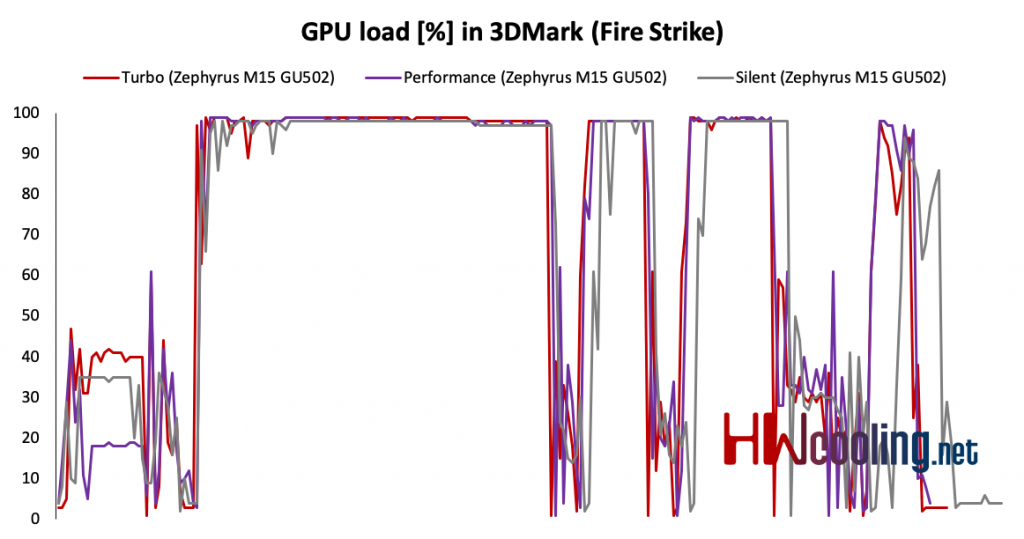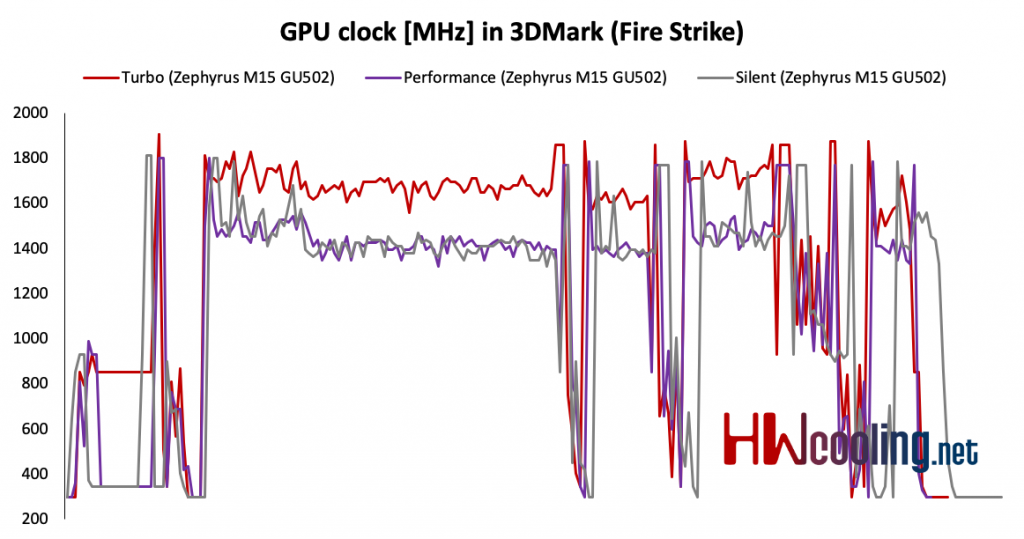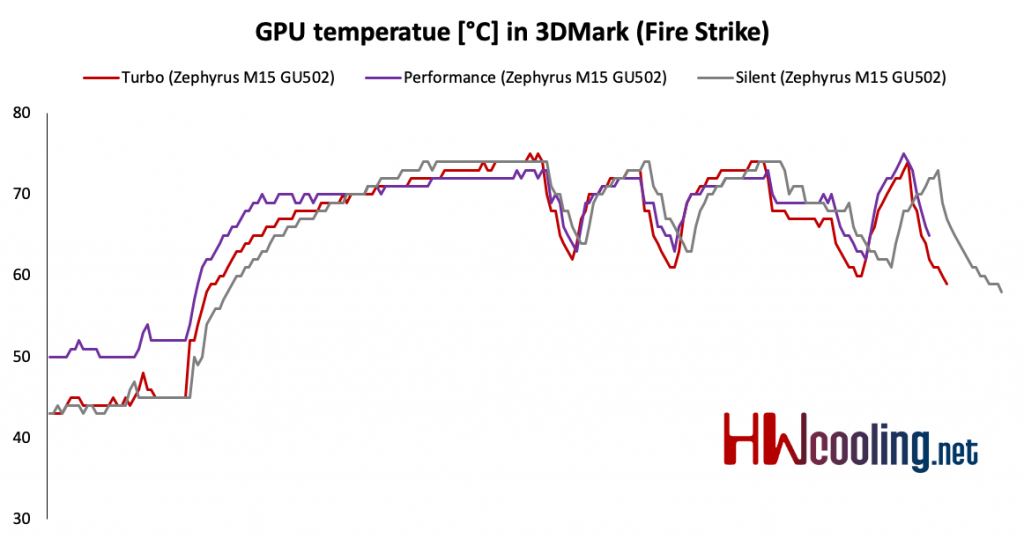Performance modes
You definitely know the ROG Zephyrus gaming line by Asus well, as we only recently brought you a test of the top-notch model Duo 15. The Zephyrus line started with one product, but today several models bear this tag. One of them is the M15 which, however, has little in common with the original Zephyrus. On the outside, it looks like a regular laptop without gimmicks in the form of a secondary display or the AAS.
Performance modes
The notebook offers an option in ROG Armoury Crate to choose from Silent, Performance and Turbo power modes.
All the tests were done in Turbo, but it’s worth looking at what differences the individual modes offer. You will definitely not expect some results. Again, we compare the same parameters, but this time in 3DMark in the Fire Strike benchmark.
The clock speed of the processor immediately shows an interesting development. Silent is around 3.5 GHz with drops to 2.4 GHz. Performance is significantly better. It reaches almost 4.4 GHz and drops to about 3.6 GHz. Turbo is somewhere in between with the same maximum as Performance but at slightly lower clock speed when dropping to about 3.2 GHz.
Power draw more or less corresponds to this, so Performance and Turbo range from 15-40 W and Silent only draws about 10 W.
Silent has lower temperatures due to lower clock speed, but the difference is not very large, maximum about 10 degrees. Performance has the highest temperatures, not Turbo, as it might seem. The reason is similar power draw but quieter operation of fans with Performance than with Turbo.
How’s the graphics card? No differences in the load as with Blender, so it always works at full speed.
With clock speed, the difference between the modes is again visible. Surprisingly, Silent and Performance have very similar GPU clock speed with a stable value around 1400 MHz which would fit the specification. In Turbo, the clock speed is even higher, above 1600 MHz.
Consumption corresponds to clock speed and therefore in Turbo mode is the highest, about 100 – 120W. More or less identical to the setting to Performance or Silent, i.e. around 80 W.
We do not see any surprises when heating up, all three modes are very close to each other with only minimal differences in degrees Celsius.
Zephyrus Duo 15 offered up to 15% differences between modes. The M15 has 11% between Silent and Performance and 7% between Performance and Turbo. The differences are thus less visible, but still well measurable. Smaller fluctuations have already been seen in the flow charts, so the real results of the 3DMark score are not a big surprise. However, it is still interesting to see almost 20% difference between Silent and Turbo.
- Contents
- Specs and details
- Testing methodology
- Display tests
- Rendering and Geekbench
- 3D/PC Mark and Unigine Heaven/Superposition
- Gaming tests – dedicated graphics card
- Encryption, encoding
- Memory and storage tests
- Heating and battery life
- Blender – CPU, CUDA and Optix test
- Performance modes
- Utility application
- Conclusion





